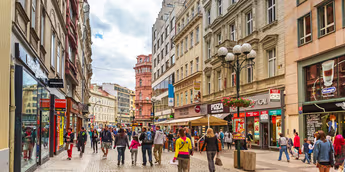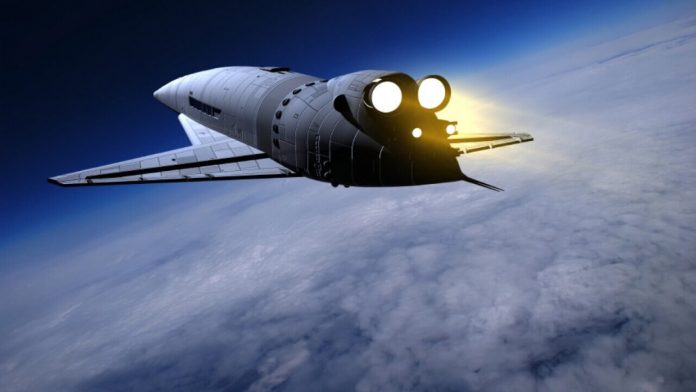Wisdom Deji-Folutile
For far too long, the stars and constellations have looked untenable to the human race. After hundreds and thousands of years of gazing at the skies as a grounded species, humanity finally hacked the magic of flight in the 18th century. Almost 200 years later, Yuri Gagarin became the first human in space in 1961, thus opening up the human race to another frontier of travel.
However, for far too long, space travel has been a pipe dream for the common person, and for decades, professional astronauts had to go through months and years of vigorous training to prepare for space flight, a chance to see the Earth from up above. But now, that is all starting to change. Space tourism has come to the fore, and with it comes the promise that space is no longer untenable to everyday people—at least not for long.
2021 has been a year of incredible developments in the area of space tourism. After years of ramped-up investments and remarkable developmental progress, the premier harvest of commercial space travel shot to the edge of the Karman Line, reaping the first tangible fruits for commercial space travel in this decade.
But unlike what recent headlines may suggest, commercial space tourism is not a new concept at all. About eight commercial flights to the International Space Station occurred aboard a Russian Soyuz spacecraft between 2001 and 2009. However, the seven astronauts aboard these flights paid as much as $20-30m on the trips. Suffice to say; the Soyuz missions drew a clear line in the sand: commercial space travel was for the filthy rich.
But now, commercial space travel has become something less of a pipe dream for most, with companies like Elon Musk’s SpaceX and Jeff Bezos’ Blue Origin developing reusable crafts and significantly driving down the costs of space travel for those seeking recreational missions. The process of creating these technological feats was painstaking and cash-intensive— the owners of the three leading companies looking to corner the commercial space travel market are outright billionaires. The two companies mentioned earlier, along with Richard Branson’s Virgin Galactic, have publicised commercial space travel with what has been dubbed the ‘billionaire space race’.
Branson kicked off his company’s crewed commercial space travel initiative in 2021 by flying aboard a suborbital spaceflight of the SpaceShip Two-class VSS Unity. The craft launched on July 11 2021, and aboard were pilots David Mackay and Michael Masucci, passengers Sirisha Bandla, Colin Bennett, Beth Moses, and the man himself, Richard Branson.
READ ALSO: Man rapes woman on a train as other riders watch and ‘did nothing’
Just nine days later, Jeff Bezos, the second richest man in the world and his brother Mark launched a first crewed flight to space aboard the New Shepard rocket with two other passengers: American aviator Wally Funk and Teenager Oliver Daemen. Daemen secured his seat on the NS-16 mission through an auction and was the only paying customer on the flight.
Bezos’ fledgling space tourism company launched another crewed mission 100km above the Earth, this time taking 90-year-old actor William Shatner (who played Star Trek’s iconic Captain Kirk); Audrey Powers, Blue Origin’s Vice President of Mission & Flight Operations; Chris Boshuizen, co-founder of Planet Labs, where he served as Chief Technology Officer from 2010 to 2015; and Glen de Vries, the co-founder of Medidata Solutions, the world’s most-used clinical research platform. Asides from Powers (whose flight was probably free), It is not yet known how much Shatner and the two other crew members paid to be aboard the NS-18 Mission.
Blue Origin’s “Inspiration4” mission was a more audacious feat in comparison to the achievements of Blue Origin and Virgin Galactic. Instead of flight durations that were minutes long, the crewed mission took three days—from September 16 to 18– and travelled as high as 590km above the Earth. The four-person crew included Jared Isaacman, founder and CEO of Shift4 Payments and an accomplished pilot and adventurer; Hayley Arceneaux, Medical Officer and a physician assistant at St. Jude Children’s Research Hospital and paediatric cancer survivor; Mission Specialist Chris Sembroski, an Air Force veteran and aerospace data engineer; and Mission Pilot Dr Sian Proctor, a geoscientist, entrepreneur, and trained pilot. The four space travellers were on a fundraising mission and also conducted scientific research designed to advance human health on Earth and during future long-duration spaceflights.
Why Commercial Space Travel?
For these billionaire space enthusiasts, commercial space travel not only serves as a means of getting a huge payday it also provides the opportunity to realise lifelong dreams. For instance, since as early as his teenage years, Bezos has expressed a desire to reach for the stars and “build space hotels, amusement parks and colonies for 2 million or 3 million people who would be in orbit”.
The Amazon owner is also of the opinion that space travel could be a necessity for the human race going forward, exploring the outer solar system, and escaping the planet’s impending doom (should we be unable to save it).
In 2016, Bezos said that the primary allure of space tourism was to improve the buzz around the idea of space travel for entertainment and leisure. This could enhance the public interest and dampen fears, just as flight tourism did in the advent of the aircraft.
Another Space enthusiast who also happens to own a space company is Elon Musk. Elon’s ambition is also that humanity becomes a multi-planetary species, something the businessman has often stated.
For these owners, it seems obvious that human beings becoming a space-faring species is the allure of commercial space flight. Hence, space tourism can be seen as a means to an end and not the end itself.
Another reason for commercial space travel would be the development of new technologies through extraterrestrial research. The SpaceX crew that travelled to space in September conducted extensive research in hopes to further medical advancements.
In July, Bezos mentioned that pursuing space travel could generate solutions for climate change. After his trip aboard the New Shepard, Bezos told NBC: “We have to build a road to space so that our kids and their kids can build a future. We live on this beautiful planet. You can’t imagine how thin the atmosphere is when you see it from space. We need to take all heavy industry and all polluting industry and move it into space.”
Another benefit of commercial space travel is—believe it or not—perspective. It has been said that observing the planet from space can alter an astronauts’ cosmic perspective, a mental shift known as the “Overview Effect.” First coined by space writer Frank White in 1987, the Overview Effect is described as a feeling of awe for our home planet and a sense of responsibility for taking care of it. Most persons who go to space often come back with new perspectives on the planet and our interconnectedness as a species and as living beings.
Backlash and concerns
Space exploration, especially in the commercial sense, is not without criticism. For instance, most recently, British royal and second in line to the throne Prince William said that billionaires should be more focused on “trying to repair this planet, not trying to find the next place to go and live.”
Many climate activists and members of the general populace also take this view. According to some, the billions of dollars invested in commercial space travel by wealthy parties could be used to better the environment, solve societal problems and effect change here on Earth.
Climate scientists have also noted that the carbon footprint of such space missions could be devastating for the planet.
“The carbon footprint of launching yourself into space in one of these rockets is incredibly high, close to about 100 times higher than if you took a long-haul flight,” Eloise Marais, a physical geography professor at the University College London, told Recode. “It’s incredibly problematic if we want to be environmentally conscious and consider our carbon footprint.”
A 2010 study found that the soot released by 1,000 space tourism flights could warm Antarctica by nearly 1 degree Celsius.
According to the report, soot particles emitted by the proposed fleet of space tourism rockets would accumulate at about 40 km altitude, three times higher than airline traffic. This means that instead of soot falling to the Earth, it remains in the atmosphere for years, blanketing the planet and blocking the sun’s rays from reaching Earth.
William Shatner, who was aboard the October 13 NS-18 mission flight, reacted to Prince William’s comments, saying he ‘had the wrong idea’.
“I would tell the prince, and I hope the prince gets the message — this is a baby step into the idea of getting the industry up there, so that all those polluting industries, especially, for example, the industries that make electricity … off of Earth. … The prince is missing the point. The point is these are the baby steps to show people [that] it’s very practical,” he had said.
Another qualm people have with commercial spaceflight is that the promise of cheaper flights has not yet manifested. The fourth seat on July 20’s NS-16 mission reportedly cost $28m—although this number was reached at an auction and was not an outright price tag.
Virgin Galactic already reportedly has more than 600 reservations lined up with tickets initially costing $250,000 apiece.
For many, space travel is nothing more than an expensive and ecologically damning joy ride taken by the rich and privileged. For others, it provides the next frontier of human endeavour and a saving grace for humanity and even the planet as a whole.






















